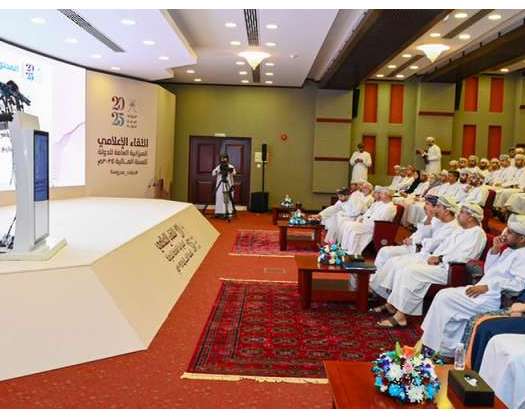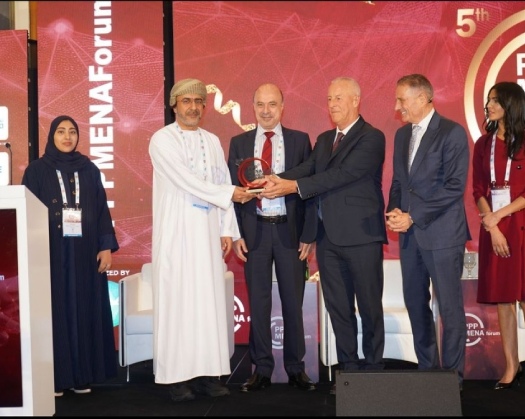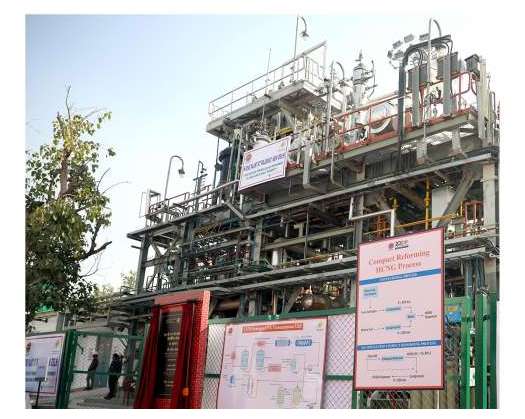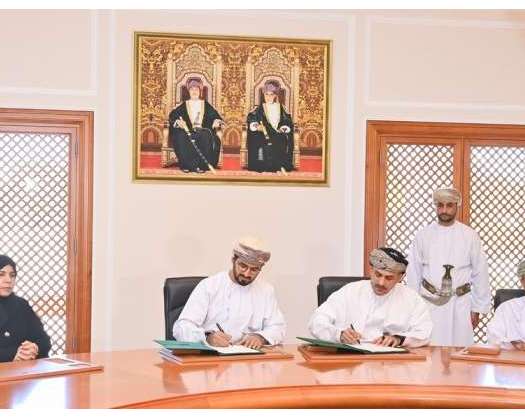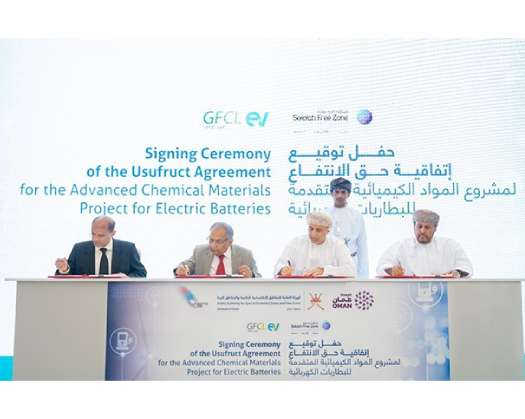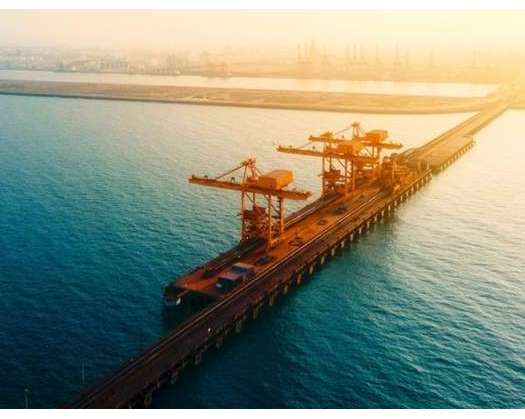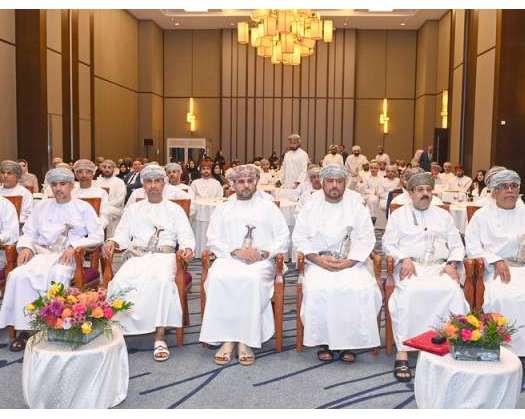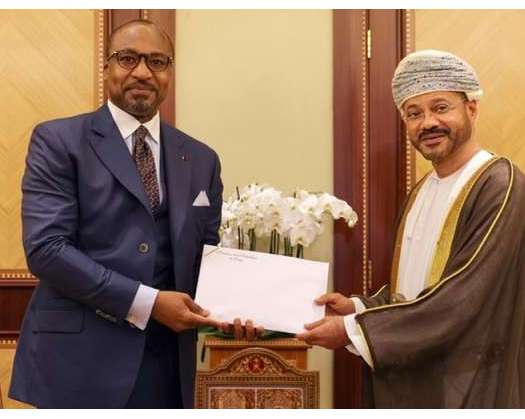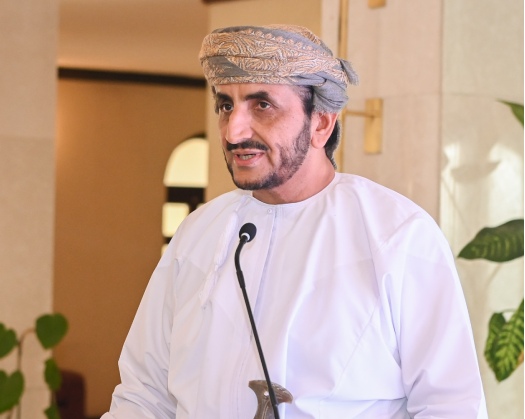Muscat: Sultan bin Salim Al Habsi, the Minister of Finance, announced that the 2025 budget has been crafted with a strategy aimed at ensuring ongoing financial, economic, and social stability for the government.
He emphasized the government's commitment to enhancing public finance metrics and achieving financial sustainability while maintaining expenditure levels on essential services.
The minister reiterated that the government will continue to provide subsidies for electricity, water, wastewater, fuel, and basic food items, along with social and insurance programs and benefits.
This information was shared during a media briefing on the 2025 budget conducted by the Ministry of Finance in Muscat today.
In his address, the minister noted that the projections for the state's general budget for 2025 were developed through collaborative efforts with relevant authorities within the State's Administrative Apparatus.
He further explained that these projections were informed by critical factors and data, estimating total public revenues at approximately OMR11.180 billion, based on an average oil barrel price of OMR60, reflecting a 1.5 percent increase compared to the estimated revenues for 2024.
Al Habsi highlighted that oil revenues account for 52 percent of total revenues, while the gas sector contributes 16 percent, and non-oil revenues make up 32 percent of the overall public revenues.
The minister stated that the projected public spending in the state's general budget for 2025 is estimated at OMR11.800 billion, reflecting an increase of approximately OMR150 million compared to the public spending approved in the 2024 budget.
He noted that these projections indicate a budget deficit of OMR620 million for 2025, which will be addressed through borrowing OMR220 million and utilizing OMR400 million from reserves.
The Minister of Finance highlighted that the 2025 budget allocates around OMR5.004 billion for social services, covering education, health, housing, and social welfare sectors, marking a 4.2 percent increase from the allocations in 2024.
In response to inquiries from the press, the minister revealed that the 2025 budget includes provisions for the promotion of senior employees from 2015-2016, and that 4,000 new positions will be created in the education sector in 2025.
Al Habsi further explained that to maintain low inflation levels, the General Budget for the fiscal year 2025 incorporates financial provisions for subsidies totaling OMR1.580 billion. This includes OMR577 million for the Social Protection Scheme, OMR520 million for electricity subsidies, and OMR194 million for water and wastewater subsidies.
Moreover, OMR82 million is designated for transportation subsidies, OMR73 million for supporting development and housing loan interests, and OMR59 million for waste sector support, with the remaining subsidy funds allocated to assist with petroleum products, food commodities, and other areas.
The Minister of Finance stated that to promote decentralized development across the governorates in line with Royal Directives, each governorate was allocated OMR20 million during the 10th five-year plan, totaling OMR220 million. As of the end of 2024, OMR147 million, or 68 percent of the approved amount, has been committed.
The minister emphasized that the State’s General Budget for 2025 prioritizes the Development Bank's ongoing support for value-added projects by increasing its loan portfolio, with an allocation of OMR80 million aimed at enhancing the bank’s capital for that year.
He noted that by the end of 2024, the Development Bank had over 22,000 outstanding loans, with its portfolio exceeding OMR277 million as of November 2024, reflecting a 34 percent increase since June 2023.
Additionally, the Minister of Finance mentioned that the (Iskan) program, launched in collaboration with Oman Housing Bank last year, saw the bank’s lending portfolio grow by 23 percent by the end of December 2024 compared to December 2022, reaching over OMR855 million.
He also highlighted that the approved figures indicate a 1.9 percent growth in gross domestic product (GDP) at constant prices, amounting to approximately OMR28.146 billion by the end of the third quarter of 2024, up from OMR27.632 billion during the same period in 2023.
The minister reported that data from the National Centre for Statistics and Information (NCSI) reveals that the inflation rate in the Sultanate of Oman was approximately 0.6 percent up to November 2024, a decrease from about 1.1 percent during the same timeframe in 2023. This sustained low inflation is largely due to government initiatives aimed at price stabilization, which include support for petroleum products, electricity, water, and essential commodities.
In terms of foreign direct investments (FDI), the minister noted that the government's efforts to simplify processes and implement previously announced programs have yielded positive results. Preliminary data indicates that by the end of the third quarter of 2024, FDI in the Sultanate of Oman reached OMR26.677 billion, reflecting a 16 percent increase compared to the same period in 2023.
Subsequently, Abdullah bin Salim Al Harthy, Undersecretary of the Ministry of Finance, delivered a visual presentation that outlined key financial, economic, and monetary indicators, along with the preliminary outcomes of the State’s General Budget for the fiscal year 2024 and the budget for 2025. He also addressed potential financial and economic risks, as well as initiatives aimed at enhancing the management of public finances.
The undersecretary further mentioned that global oil price forecasts suggest that average prices for 2025, according to international agencies, are expected to fall between $70 and $80 per barrel.
Additionally, Al Harthy projected that the GDP of the Sultanate of Oman at constant prices is anticipated to grow to approximately OMR38.390 billion by the end of 2024 and to around OMR39.426 billion in 2025.
He outlined that the financial and economic goals of the 2025 budget aim to sustain the provision of essential social services by the government, maintain subsidies for electricity, water, fuel, and food products, support urban development, enhance homeownership opportunities for a larger segment of the population, and continue the government's initiative to bolster the National Employment Programme, ensuring insurance coverage and equitable social protection for diverse societal groups.
Al Harthy noted that the projected public expenditure for 2025 includes OMR8.555 billion allocated for current expenses, approximately OMR900 million for development initiatives, and around OMR2.345 billion for contributions and other expenditures, which together represent 20 percent of the total public spending.
He emphasized that the State's General Budget for the fiscal year 2025 aims to uphold financial, economic, and social stability in accordance with the financial framework of the 10th Five-Year Development Plan (2021-2025) and Oman Vision 2040, while striving to achieve a range of economic and social objectives.
He mentioned that the general budget for 2025 has earmarked about OMR5 billion for expenditures in the social and basic sectors, reflecting a 4.2 percent increase from the approved budget for 2024, which was approximately OMR4.8 billion.
The undersecretary further indicated that spending on social and basic sectors accounts for 42 percent of the total public expenditure approved in the 2025 budget, distributed as follows: 24 percent for health, 9 percent for housing, 28 percent for social security and welfare, and 39 percent for education.
He confirmed that the total payments made to private sector companies in the Sultanate of Oman by the end of 2024 amounted to OMR1.631 billion.
In relation to initiatives aimed at employing jobseekers within the private sector, the approved budget for 2025 has earmarked approximately OMR50 million to support these efforts. This funding is in addition to the revenue generated from a 1.2 percent transfer of the value of purchase invoices related to the oil and gas sectors, as well as from government entities and companies associated with the Oman Investment Authority.
Regarding the Governorates Development Programme, Al Harthy emphasized that Royal Directives have mandated an increase in financial allocations for this programme from OMR10 million to OMR20 million for each governorate during the 10th five-year Development Plan. This increase aims to facilitate the implementation of strategic programmes that promote sustainable development in governorates and cities, while also enhancing their competitive advantages.
Additionally, he noted that preliminary financial performance results for 2024 indicate a surplus of approximately OMR540 million, contrasting with the projected deficit of around OMR640 million in the State’s General Budget for that fiscal year.
He further mentioned that the state's general revenues for 2024 have risen to OMR12.674 billion, surpassing the approved budget figure of OMR11.010 billion for the same year.
Moreover, he reported that the average oil price reached $82 per barrel, compared to the $60 per barrel projected in the 2024 budget, while public spending was approximately OMR12.134 billion, exceeding the approved amount of OMR11.650 billion.
He noted that approximately OMR468 million of the total additional financial revenues were allocated to boost social spending and stimulate economic growth, distributed as follows: OMR176 million for enhancing support for petroleum products, OMR125 million for bolstering allocations in the electricity, water, wastewater, and waste sectors, OMR50 million to increase the budget of the Ministry of Social Development for social security beneficiaries and low-income families, OMR111 million to improve the budgets of the health and education sectors to accommodate growing service demands, and OMR6 million to exempt 532 loans for small and medium enterprises from the Development Bank and the Authority for Small and Medium Enterprises Development for the year 2024.
He emphasized that the public debt situation in the Sultanate of Oman has shown positive trends, attributed to the ongoing implementation of various government measures and initiatives aimed at optimizing and enhancing spending efficiency, as well as increasing non-oil government revenues. The rise in oil prices has also created an opportunity to direct a portion of the additional revenues towards reducing public debt and substituting high-cost government loans with more affordable options.
Al Harthy stated that the Ministry of Finance is dedicated to fulfilling public debt obligations according to the established borrowing plan, which includes repaying OMR355 million of external loans ahead of schedule, settling OMR600 million in government development bonds and local bonds that are due, and issuing government development bonds and Ijarah bonds totaling OMR705 million in accordance with the approved borrowing strategy.
The preliminary financial performance results for the year 2024 reveal a reduction in public debt by approximately OMR800 million, bringing the total down to OMR14.4 billion from OMR15.2 billion at the start of the year. Additionally, the public debt-to-GDP ratio has decreased to 34 percent. The cost of servicing public debt has also fallen to around OMR940 million, which is a reduction of about OMR1.050 billion compared to the approved budget for 2024.
Abdullah bin Salim Al Harthy, Undersecretary of the Ministry of Finance, stated that the ministry will initiate the pilot phase of the unified government financial system "Maliya" with select government entities. The full implementation of this system is scheduled for early 2026, coinciding with the launch of the 11th five-year Development Plan, with completion expected by 2030. This new system aims to create a centralized government portal for all financial support systems, representing a modern electronic approach to managing public finances in the Sultanate of Oman. It will facilitate planning, execution, monitoring, and reporting related to the national budget, thereby enhancing public finance management to ensure the effective and optimal use of financial resources in alignment with Oman Vision 2040.

